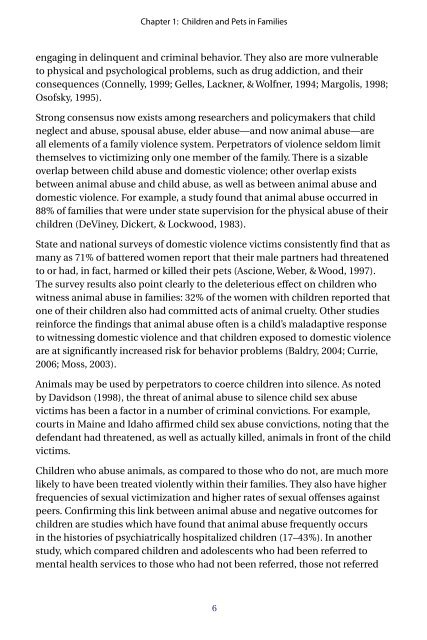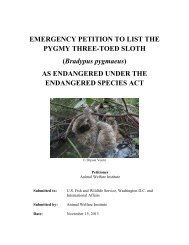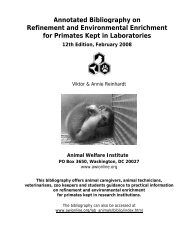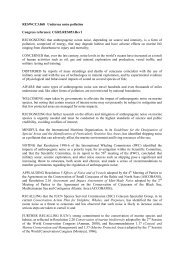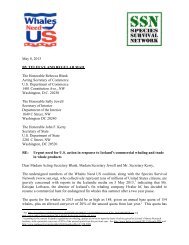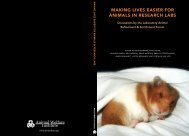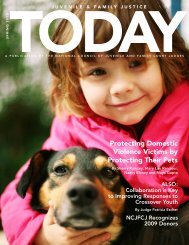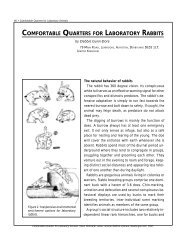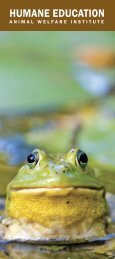A Common Bond - The National Link Coalition
A Common Bond - The National Link Coalition
A Common Bond - The National Link Coalition
- No tags were found...
You also want an ePaper? Increase the reach of your titles
YUMPU automatically turns print PDFs into web optimized ePapers that Google loves.
Chapter 1: Children and Pets in Familiesengaging in delinquent and criminal behavior. <strong>The</strong>y also are more vulnerableto physical and psychological problems, such as drug addiction, and theirconsequences (Connelly, 1999; Gelles, Lackner, & Wolfner, 1994; Margolis, 1998;Osofsky, 1995).Strong consensus now exists among researchers and policymakers that childneglect and abuse, spousal abuse, elder abuse—and now animal abuse—areall elements of a family violence system. Perpetrators of violence seldom limitthemselves to victimizing only one member of the family. <strong>The</strong>re is a sizableoverlap between child abuse and domestic violence; other overlap existsbetween animal abuse and child abuse, as well as between animal abuse anddomestic violence. For example, a study found that animal abuse occurred in88% of families that were under state supervision for the physical abuse of theirchildren (DeViney, Dickert, & Lockwood, 1983).State and national surveys of domestic violence victims consistently find that asmany as 71% of battered women report that their male partners had threatenedto or had, in fact, harmed or killed their pets (Ascione, Weber, & Wood, 1997).<strong>The</strong> survey results also point clearly to the deleterious effect on children whowitness animal abuse in families: 32% of the women with children reported thatone of their children also had committed acts of animal cruelty. Other studiesreinforce the findings that animal abuse often is a child’s maladaptive responseto witnessing domestic violence and that children exposed to domestic violenceare at significantly increased risk for behavior problems (Baldry, 2004; Currie,2006; Moss, 2003).Animals may be used by perpetrators to coerce children into silence. As notedby Davidson (1998), the threat of animal abuse to silence child sex abusevictims has been a factor in a number of criminal convictions. For example,courts in Maine and Idaho affirmed child sex abuse convictions, noting that thedefendant had threatened, as well as actually killed, animals in front of the childvictims.Children who abuse animals, as compared to those who do not, are much morelikely to have been treated violently within their families. <strong>The</strong>y also have higherfrequencies of sexual victimization and higher rates of sexual offenses againstpeers. Confirming this link between animal abuse and negative outcomes forchildren are studies which have found that animal abuse frequently occursin the histories of psychiatrically hospitalized children (17–43%). In anotherstudy, which compared children and adolescents who had been referred tomental health services to those who had not been referred, those not referred6


